
OnePlus 11
256 GB, Titan Black, 6.70", Hybrid Dual SIM + eSIM, 5G

The biggest innovation on the OnePlus 11 is its round camera bump. Aside from that, it’s very reminiscent of the OnePlus 10 Pro.
On paper, the OnePlus 11’s improvements include Snapdragon 8 Gen 2 and 20 watts more power when charging. On the flip side, wireless charging, which was available on the OnePlus 10 Pro, is gone. The camera system is, again, a collaboration with Hasselblad, but the 30x zoom and 150-degree wide-angle shots are gone.

OnePlus 11
256 GB, Titan Black, 6.70", Hybrid Dual SIM + eSIM, 5G

OnePlus 11
256 GB, Eternal Green, 6.70", Hybrid Dual SIM + eSIM, 5G

The back of the OnePlus 11 is home to the visually most obvious difference to the predecessor: the camera bump is round and the Hasselblad lettering is more prominent. In addition, my green test device is glossy once again, unlike the nice, matt black finish of my OnePlus 10 Pro.
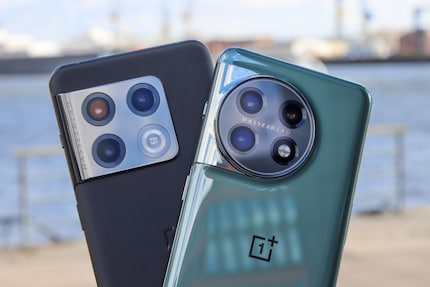
Now, in case you’re thinking that comparing the 2022 pro version with the 2023 non-pro version is unfair, here’s why I’m doing it: there was no «normal» 2022 OnePlus 10, and there’s no OnePlus 11 Pro yet either.
The OnePlus 11 features the same 6.7-inch AMOLED display as the 10 Pro, with 3216 × 1440 pixels, a 120-hertz refresh rate and a peak brightness of 500 to 1300 nits. It delivers a sharp, detailed image with natural-looking, vivid colours even in sunlight.
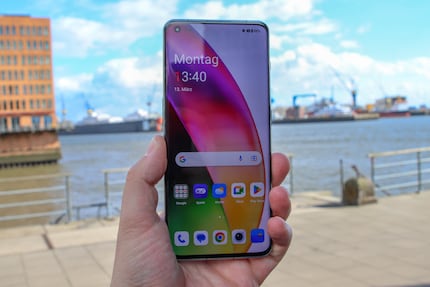
The screen is protected by Gorilla Glass Victus, while the back relies on the lesser Gorilla Glass 5. So, you’re better off putting your phone down screen down than screen up. Mind you, sturdy glass is still no invitation to drop it.
I like that OnePlus has continued to include the Alert Slider despite its merger with Oppo. Not only is it a distinctive feature of the brand, it’s also handy; the slider lets you easily switch your phone from loud to vibrate to silent.

In terms of performance, the OnePlus 11 has a bit of a leg up on last year’s model. This is in large part thanks to Snapdragon 8 Gen 2, Qualcomm’s current top-of-the-line chip. The OnePlus 11 is available in two versions: there’s one with 128 gigabytes of storage and 8 gigabytes of RAM, and then there’s my test device that offers 256 gigabytes of storage and 16 gigabytes of RAM. Here are the Geekbench 6 results for my device:
| Geekbench 6 | Single- and multi-core | OpenCL |
|---|---|---|
| OnePlus 11
(Snapdragon 8 Gen 2) | 1,524 and 5,167 points | 8,572 points |
| OnePlus 10 Pro
(Snapdragon 8 Gen 1) | 1,363 and 3,890 points | 4,585 points |
In particular, the OnePlus 11 performs better in multi-core mode and graphics calculation with OpenCL. Compared with other smartphones equipped with the Snapdragon 8 Gen 2, the 11 also looks good:
| Geekbench 6 | Single- and multi-core | OpenCL |
|---|---|---|
| OnePlus 11 | 1,524 and 5,167 points | 8,572 points |
| Galaxy S23 Ultra | 1,986 and 5,193 points | 9,131 points |
| Xiaomi 13 Pro | 1,412 and 5,287 points | 5,092 points |
Looking at the results, two things stand out in particular: the Galaxy S23 Ultra performs much better – especially in single-core mode – and Xiaomi has problems with the graphics. Samsung’s solid result can be traced back to a modified chip in the Galaxy S23 Ultra. One of the cores is overclocked at 3.36 gigahertz instead of the regular 3.19 gigahertz. As for the Xiaomi 13 Pro’s poor graphics score, I’ve yet to find an explanation.
Despite some significant differences in test results, you’ll hardly notice a difference in practice. Everyday applications have short loading times on all smartphones with the Snapdragon 8 Gen 2, and lagging is long gone from this price range.
The OnePlus 11’s 5,000 mAh battery charges very quickly with the included 100-watt power adapter. The advertised 25-minute charging time holds up in my experience. After ten minutes, the battery is already at about 50 per cent. Compared with the OnePlus 10 Pro, the SuperVooc fast charging technology offers 20 watts more power. This translates into a charging process that’s about five minutes shorter. While that sounds good, it’ll likely only make a real difference in a few select situations.
Wireless charging, on the other hand, appears not to be in too high demand, given OnePlus has removed it from the 11. I don’t mind. As convenient as wireless charging seems, it’s slower – and each time I pick up my phone, I interrupt it. I’m not sure how useful this is in real life.
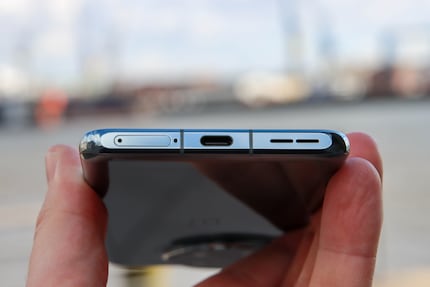
Despite faster charging, the USB-C port on the OnePlus 11 is a step backwards. It’s now only the 2.0 standard, while OnePlus 10 Pro offers 3.1. Mind you, as long as you’re not constantly transferring large amounts of data via cable to or from your phone, the difference is insignificant.
The OnePlus 11 runs OxygenOS 13, an adapted version of Android 13 that’s mainly characterised by a different user interface. It has elements that Android doesn’t include by default. For example, there’s Zen Mode, which blocks selected features on your phone for the period of time you choose, or Floating Window, which facilitates multitasking. Split screen allows you to open two apps on the display at the same time, and the smart sidebar gives you quick access to selected apps and functions. If you use your smartphone for private and professional purposes, work mode helps you separate the two.
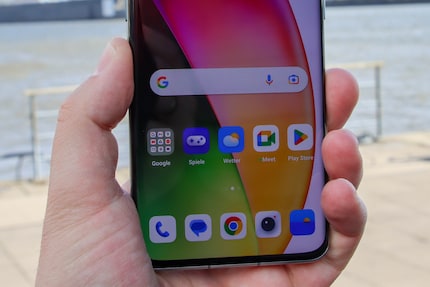
Only Netflix stands out negatively as a preinstalled third-party app, but it’s easy to delete. Simply press and hold the app icon in the overview (not on the home screen) and click delete.
Visually, I’ve become less of a fan of OxygenOS since OnePlus and Oppo merged the development of their two software interfaces. But I’d like to see some of the additional features on other Android devices. I’d use work mode immediately, and Flexible Window could help make Android tablets more useful.
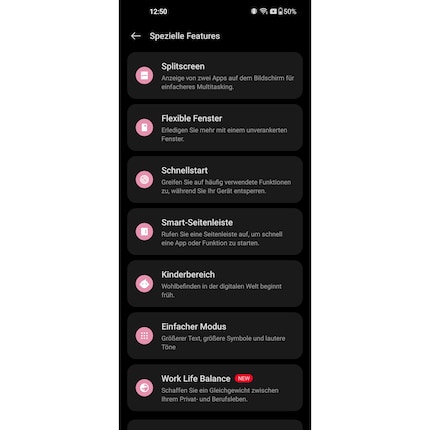
The OnePlus 11 is the first smartphone to be covered by the manufacturer’s new update guarantee. It’s supposed to receive four major Android updates – i.e. until Android 17 – as well as security updates for five years. Compared with the OnePlus 10 Pro, that’s one year more in each case.
The main and ultra-wide-angle cameras of the OnePlus 11 remain on par with the predecessor in terms of resolution. But compared to the 10, they’ve swapped megapixels; the main camera now has 50, the ultra-wide-angle camera 48 megapixels.
Main camera
Ultra wide-angle camera
Telecamera
Front camera
OnePlus has also removed the 150-degree option that was available on the predecessor’s ultra-wide-angle camera. The 10’s ultra-wide-angle camera offered 110 degrees by default, which you could switch to 150 degrees. In contrast, the OnePlus 11 only has a viewing angle of 115 degrees. In addition, the maximum zoom is now only 20x; on the 10, it was 30x.
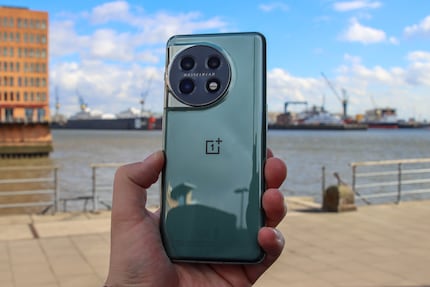
The main camera on the OnePlus 11 delivers photos with natural colour reproduction. There are noticeable differences compared to the OnePlus 10 Pro, but neither look «wrong» to me. However, the «#openstreetartgallery» sign looks a bit more washed out and lighter on the 11. In return, the more colourful areas benefit from the 11’s higher brightness.
On the left: OnePlus 11. On the right: OnePlus 10 Pro – Photos: Jan Johannsen
The OnePlus 11 has pixel binning enabled by default, which combines four pixels into one. This is supposed to increase light sensitivity. The photos then have a resolution of 12.5, and not 50, megapixels. I don’t notice any negative impact on the level of detail. It’s very high.
The ultra-wide-angle camera also relies on pixel binning. Unless you select the high-resolution option in the camera settings, photos you snap will have a resolution of 12 megapixels. OnePlus does a good job of eliminating distortions at the edges. Comapred to the OnePlus 10, the 11 offers better detail accuracy, and I also prefer its colour reproduction. I’ll gladly trade the 150-degree viewing angle for that.

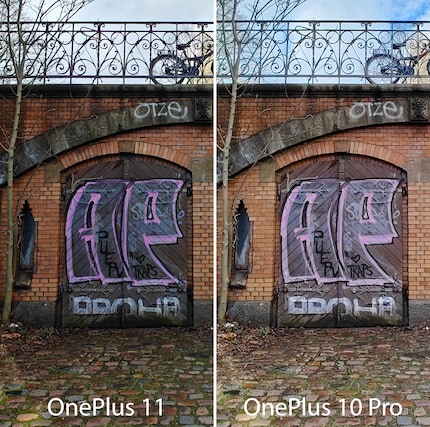
I’m not bothered by the reduced 20x digital zoom. The additional magnification you get at 30x is minimal and is accompanied by a significant loss of quality. I prefer to opt for the smaller digital focal length – which is already on the edge in terms of quality. There are noticeable artefacts and blurring.

Compared to the OnePlus 10 Pro, the 11 doesn’t deliver more detail, but it offers better HDR. The shady areas are significantly brighter.

OnePlus introduced XPan mode with the 10 Pro and has kept it with the 11. It’s a neat option if you’re after the panoramic look but don’t want to use the classic panorama function that relies on you moving your phone.
Strictly speaking, however, the resulting image is simply the middle strip of an image taken with the main camera. In other words, with some quick post-processing, you could turn any photo to this format – without any loss of quality, unlike with XPan mode. On the other hand, XPan mode allows you to select from exposure levels and decide between colour and black-and-white shots.

I’ll start with the good news: you don’t need to manually enable night mode on the OnePlus 11. The phone will do that for you automatically. The bad news? You can’t disable night mode. Your only option to bypass it is to use Pro mode. You won’t need a tripod to shoot in the dark; a steady hand during the exposure times lasting several seconds will do. The software does a good job of removing any minor movement.
I like the colour representation of night mode on the ultra-wide-angle camera best. The main camera mixes in a tad too much red for my taste. What it does well, though, is enhance the low light while still making it clear these are shots that were taken in the dark.


In a playground with some distance to street lights, the OnePlus 11 tends to overexpose the dark sky to get the playground bright enough. The colour cast is also annoyingly apparent in this case. The OnePlus 10 Pro doesn’t do a better job with this scene, but the Pixel 7 Pro does.


Compared to the 10 Pro, OnePlus has halved the resolution of the 11’s front-facing camera. Even so, 16 megapixels is still more than enough for selfies. In terms of detail and colour reproduction, the photos look good – even with backlighting. And yet, I prefer selfies taken on the OnePlus 10 Pro. Why? They’re less yellow and look sharper.
On the left: OnePlus 11. On the right: OnePlus 10 Pro – Photos: Jan Johannsen
The OnePlus 11 is an excellent smartphone. At the same time, it serves as a prime example of how difficult – or how unnecessary – technical improvements have become. The display is excellent and the phone offers ample power.
The removal of certain photo features (150-degree wide angle, only 20x zoom instead of 30x zoom) doesn’t bother me. But in terms of quality, the OnePlus 11 stagnates compared to the predecessor. Some of the competitors offer better image quality under extreme conditions.
I don’t like the look of the operating system, but that can be customised with a launcher. It’s worth noting that some of the OnePlus 11’s handy special features aren’t so easy to get on other Android devices.
The OnePlus 11 fulfils the requirements to join the ranks of flagship phones. But compared to other top-of-the-line models, it lacks that something special. OnePlus used to take pride in being one of the first to offer new features and technologies. Looking at [the components of the new Find X6 Pro](/page/with-1-inch-sensor-and-optical-zoom-oppo-find-x6-pro-present-26944 "With 1-inch sensor and optical zoom: Oppo Find X6 Pro presented»), the company seems to have passed this baton on to Oppo.
I’m tempted to recommend the OnePlus 10 Pro as a cheaper alternative to the OnePlus 11. However, the 2022 smartphone has already received its first major software update. That, along with the new update guarantee, means you’ll get two more years of updates with the OnePlus 11. Not to mention that you can’t currently get the 10 Pro significantly cheaper anyway.



OnePlus 10 Pro
256 GB, Emerald Forest, 6.70", Dual SIM, 5G
Header image: Jan Johannsen
When I was but a young student, I'd sit in my friend's living room with all my classmates and play on his SuperNES. Since then I've had the opportunity to test out all the newest technology for you. I've done reviews at Curved, Computer Bild and Netzwelt, and have now arrived at Galaxus.de.